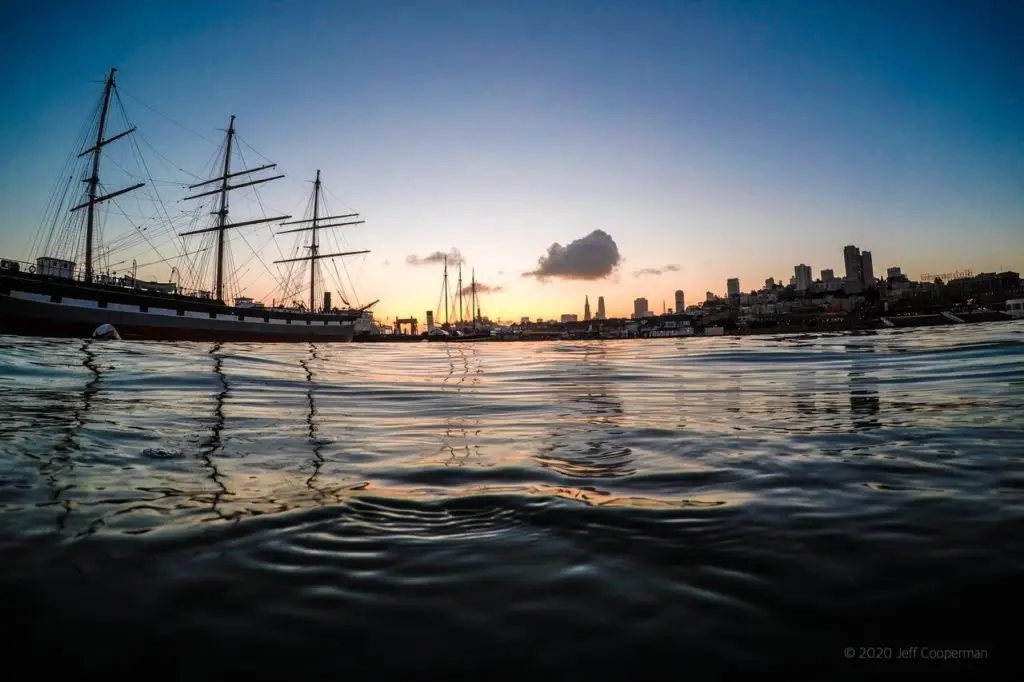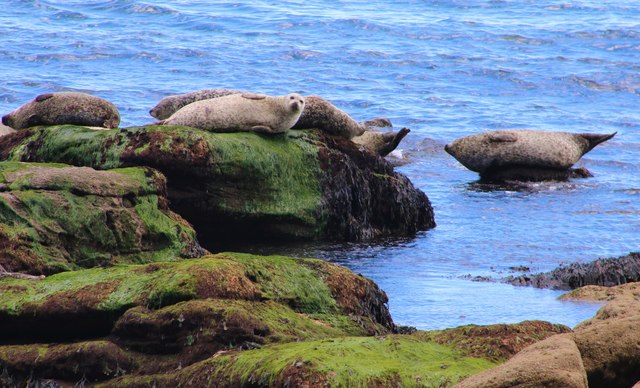What We Know About Sea Lions and Seals, Rare Incidents, and Safety Measures
Concerns about dangerous sea lion and seal interactions for swimmers in San Francisco Bay occasionally surface, especially among those new to open water or unfamiliar with the Bay’s marine life. Swimmers often ask if these animals pose a danger, and while documented incidents are rare, the question is valid. At Pacific Open Water Swim Co., we believe in addressing such concerns with clear, experience-based information.

One of the most widely discussed episodes regarding marine mammal safety occurred in San Francisco’s Aquatic Park, a historic swim venue near Ghirardelli Square and the Hyde Street Pier. In late 2017 and early 2018, four swimmers were bitten by sea lions—an unusual cluster of events that prompted both media coverage and peer-reviewed research. While we do not operate in Aquatic Park, the location remains a reference point in conversations about marine mammals and swimmer safety in the Bay.
With thousands of open water swims completed across the Bay each year—including Alcatraz crossings, bridge swims, and long-distance routes—the risk of marine mammal aggression remains extraordinarily low. Most encounters involve brief curiosity, if any interaction at all.
From time to time, swimmers ask directly whether marine mammals pose a risk—especially after hearing about past incidents. These questions are understandable, and we believe in responding with transparency. While open water swimming always carries some inherent risk, the key is understanding those risks through experience, historical context, and environmental awareness.
Understanding Marine Mammals in San Francisco Bay
California sea lions (Zalophus californianus) and Pacific harbor seals (Phoca vitulina richardii) are common in the Bay. Sea lions are typically seen hauled out on docks or navigation buoys and are known for their agility and barking vocalizations. Harbor seals are quieter and more reserved, often spotted resting on beaches or swimming silently with just their heads visible.
In our experience at Pacific Open Water Swim Co., harbor seals are peaceful and naturally wary of people. We have never observed a seal displaying aggressive behavior toward swimmers, nor are we aware of any recorded seal bite incidents in Aquatic Park or the greater Bay. Seals often exhibit passive curiosity—occasionally shadowing swimmers at a distance, surfacing nearby, or even tracking groups for miles before quietly peeling away.
Sea lions, by contrast, are more dynamic and at times assertive, especially when defending territory or competing for food. Yet sea lion interactions are overwhelmingly benign, with thousands of swimmers swimming/training in Aquatic Park and across the Bay each year without incident.

The 2017–2018 Sea Lion Incidents
Between December 2017 and January 2018, four swimmers in Aquatic Park were bitten by California sea lions, which researchers described as an unprovoked attack. The injuries were significant. Two swimmers required surgery, one suffered a bite that narrowly missed the femoral artery, and all received medical treatment.
These incidents, documented by Dr. Thomas Nuckton and colleagues in The Journal of Emergency Medicine, marked an anomaly in the long record of marine mammal coexistence in the Bay. Although theories ranged from territorial defense to illness or changes in fish migration patterns, no definitive cause was identified. Importantly, no similar clusters have been reported in the six years since.
For additional information about marine life—especially the one that worries swimmers most—see our accompanying article: Sharks in San Francisco Bay: Facts, Myths & Safety for Swimmers
Curiosity, Not Conflict
Whether sea lion or seal, most marine mammal encounters are marked by brief curiosity and little more. Occasionally, swimmers report moments of quiet companionship—animals surfacing nearby or appearing to escort the group for short stretches. These experiences, while memorable, are not uncommon in a shared marine environment.
When marine mammals approach more closely than expected, we apply the same precautionary response regardless of species. Escort vessels reposition to create space and, when feasible, guide the animal away from the swim route. We maintain continuous visual monitoring to assess behavior. Even calm wildlife can act unpredictably, and we treat all interactions with appropriate caution. Curiosity is not a sign of safety, and we do not encourage or permit interaction.
No Confirmed Bites or Aggression from Seals
We are unaware of any confirmed seal-related bite incidents in San Francisco Bay, including Aquatic Park. Seals are routinely observed keeping distance from swimmers, hauling out to rest, or watching from afar. Their behavior has been consistently passive, even during extended observation. As always, we treat their presence with the same caution we extend to all wildlife.
Pacific Open Water Swim Co.’s Marine Safety Protocols
Our operations occur in the open waters of San Francisco Bay, often far from shore. USCG-licensed captains with experience in navigation, maritime safety, and marine mammal awareness lead all swims.
Each swim includes:
- Daily environmental reviews, including tide, current, and wildlife assessments
- Pre-swim safety briefings, including marine animal guidance
- Rapid-response protocols if animals show sustained interest or signs of distress
We’ve seen harbor seals sleep on the surface, sea lions sun themselves near shipping buoys, and both species pass within view of swimmers without incident. If either approaches swimmers more closely than expected, we respond immediately to reduce proximity. These interactions have remained peaceful and infrequent.

Relative Risk in Context
While marine mammals are a visible part of the Bay’s ecosystem, the risk of sea lions and seals for swimmers remains far less pressing than the more immediate challenges: fatigue, poor preparation, sudden changes in conditions, and poor visibility. These conditions challenge swimmers daily and require attention.
The 2017–2018 sea lion bites have not been forgotten, but they stand out precisely because they were unusual. Since then, thousands of swimmers have entered Bay waters without incident, accompanied only occasionally by the quiet presence of a seal or the watchful glance of a sea lion.
Understanding this context helps keep concern aligned with probability. Marine mammals deserve attention and respect—but not disproportionate fear.
Final Thoughts
Aquatic Park and San Francisco Bay offer one of the world’s richest urban open water swimming environments. Sharing that space with wildlife is part of the experience—but it’s also manageable with awareness, structure, and a culture of caution. We remain committed to transparency and safety, knowing that most swims unfold in calm waters, alongside curious but distant neighbors.
DISCLAIMER
This information is general in nature and does not constitute a guarantee of safety. Conditions in San Francisco Bay vary daily and may change without warning. Swimmers accept full responsibility for evaluating and assuming all risks, including those related to marine life and potential wildlife interactions. Pacific Open Water Swim Co. disclaims all liability for wildlife-related incidents. This content does not supersede or modify the terms of any signed Participant Agreement.
SOURCES:
Nuckton, T.J., et al. (2019). Severe Sea Lion Bites in Urban Cold-Water Swimmers. Journal of Emergency Medicine
Operational observations from Pacific Open Water Swim Co.